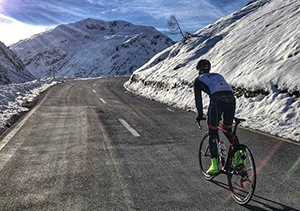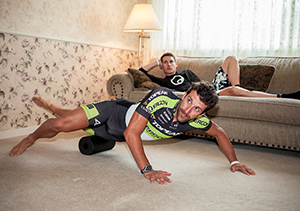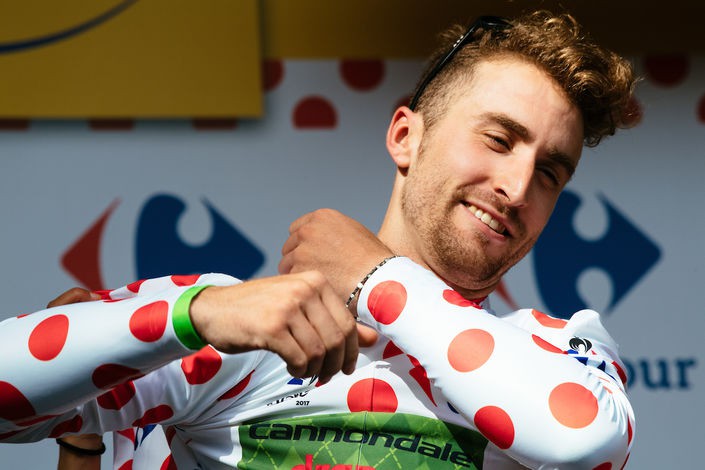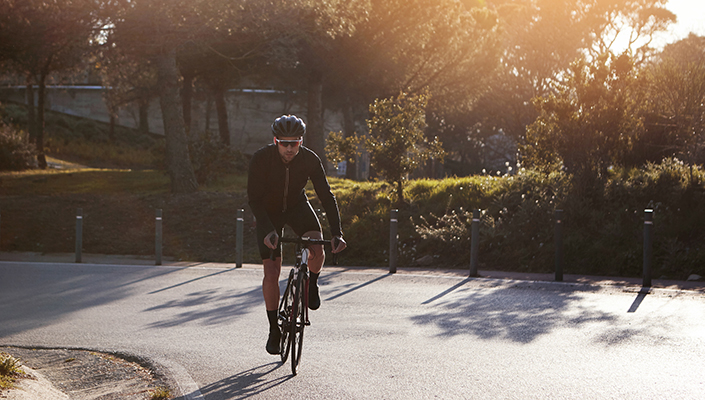We all know the feeling at the end of a long, hard ride – that rare combination of exhaustion and satisfaction that follows having pushed yourself for hours on end. Nothing would feel better than to crash on the couch with a cold beer and talk some trash with your friends, right? Well, maybe now, but tomorrow there will be a price to pay. The BikeRoar team have put their collective heads together to come up with a list of the best strategies to help you recover after a long, hard ride. And yes, beer is still on the list.
RELATED: 6 tips for clean training
Cool down

photo: Pinterest
Plenty of rides, even the friendliest ones, finish in a hard sprint or at least a solid hard few miles. After smashing your legs, take a few minutes to spin along at a very easy pace in a small gear. The blood vessels in your legs expand while you're hammering away, and stopping abruptly causes the blood to pool, which in turn limits your ability to get fresh nutrient- and oxygen-rich blood in and metabolic waste out – two keys to muscle repair and recovery.
That's why Tour de France riders will spend 15 or 20 minutes on the wind trainer cooling down, even after a gruelling stage in the Alps; it helps them bounce back to do it again tomorrow.
Compress
Studies indicate that compression socks or tights can help reduce swelling, fatigue, and muscle soreness after intense exercise. Compression clothing accelerates the process of shepherding blood back to your heart, which in turn improves blood oxygen levels and subsequent recovery. So once your cool down is done, slip on some compression tights for a few hours.
Put your feet up
One of the simplest ways to recover is to lie flat on your back with your legs up against a wall or resting on the back of a chair or couch. Once again, it's all about getting the blood moving from your legs and back into your system to be regenerated.
Rub it or roll it

photo: natch.life
We can't all afford regular massage, but there are plenty of viable substitutes that still work pretty well.
After a long hard ride, try massaging your legs with a massage stick, foam roller or lacrosse ball. This will help to push out the fluid carrying the waste products of muscle breakdown, and encourages fresh blood to flow in and help rebuild.
Research shows that massage following exercise can improve circulation up to 72 hours later. It also breaks up muscle adhesions or knots that can form from overuse, so your muscles work more smoothly and efficiently.
Get Power From Protein
Protein contains branch-chain amino acids, which have been shown to decrease exercise-induced muscle damage and promote muscle building and repair. You can buy branched-chain amino acid supplements in powder or tablet form, but eating high-protein foods like beef, chicken, eggs, fish, nuts, and legumes will also get you what you need. So, smash down a high-protein snack, shake, or meal after your ride to kick-start your muscle repair.
What do the pros do?
Each professional team has its own recovery protocols, but there are some general principles that they all share. Taylor Phinney of Team Cannondale-Drapac explains that post-race recovery is a thorough process systematically planned out by team management and doctors.

"We'll usually have a recovery shake like REGO Rapid Recovery, containing a blend of protein, carbohydrates, electrolytes, minerals and vitamins. Then we'll switch to an electrolyte drink to try and replace the fluid we lose through sweat."
Phinney goes on to outline how, within an hour of finishing the stage, riders have a meal prepared for them containing about 50 percent carbohydrates along with a source of protein and plenty of vegetables. This is usually followed by a massage and a small carbohydrate snack every hour for four hours.
Dinner will usually consist of a three or four course meal, and mostly follows the format of a salad, carbohydrates, and lean meat such as chicken or beef. Dessert is usually a fruit flan or rice pudding. As if this wasn't enough, the riders will have a final protein shake before bed. The casein protein base in the shake is designed to slowly release protein in the system during sleep, helping with muscle protein synthesis and reducing muscle breakdown.
"It's quite a process," Phinney admits. "And the most important thing after all that is to get a solid night's sleep. You just can't recover without sleep."
RELATED: What the Pros eat in a day on Tour
Sleep
"Duh!" you say. But sometimes we forget how vital sleep is to muscle rebuilding and mental recovery. Make it a point to get a solid night's sleep – you might need as much as 8-10 hours.
Duration and quality of sleep are important, and you may have to make extra efforts if you have a hard time sleeping, which is often true shortly after exercising. Tips for getting better sleep include: 1) winding down your day and getting to bed with enough time to get sufficient rest, 2) avoiding alcohol and caffeine at night, and 3) limiting or eliminating electronics, such as TV and mobile phone, to allow your mind to move from alertness to relaxation and sleep.
If it's good enough for a pro cyclist…
…it's good enough for you. Follow all these tips and you're well on your way to making an awesome recovery, ready to hit the road tomorrow and tear apart some Strava records. Ride safe, ride hard, rest up, recover well, repeat.

RELATED ARTICLE:
Better breathing techniques for cyclists
Sometimes finding better performance while on your bike is easier and more simple then you might expect. BikeRoar gives you advice on how better breathing can make a big difference in your ride... READ MORE

RELATED ARTICLE:
6 ways to make road cycling more fun
Between training, racing, and commuting, road riding can get a little boring. BikeRoar is here to help you put the fun back in road cycling with these... READ MORE




